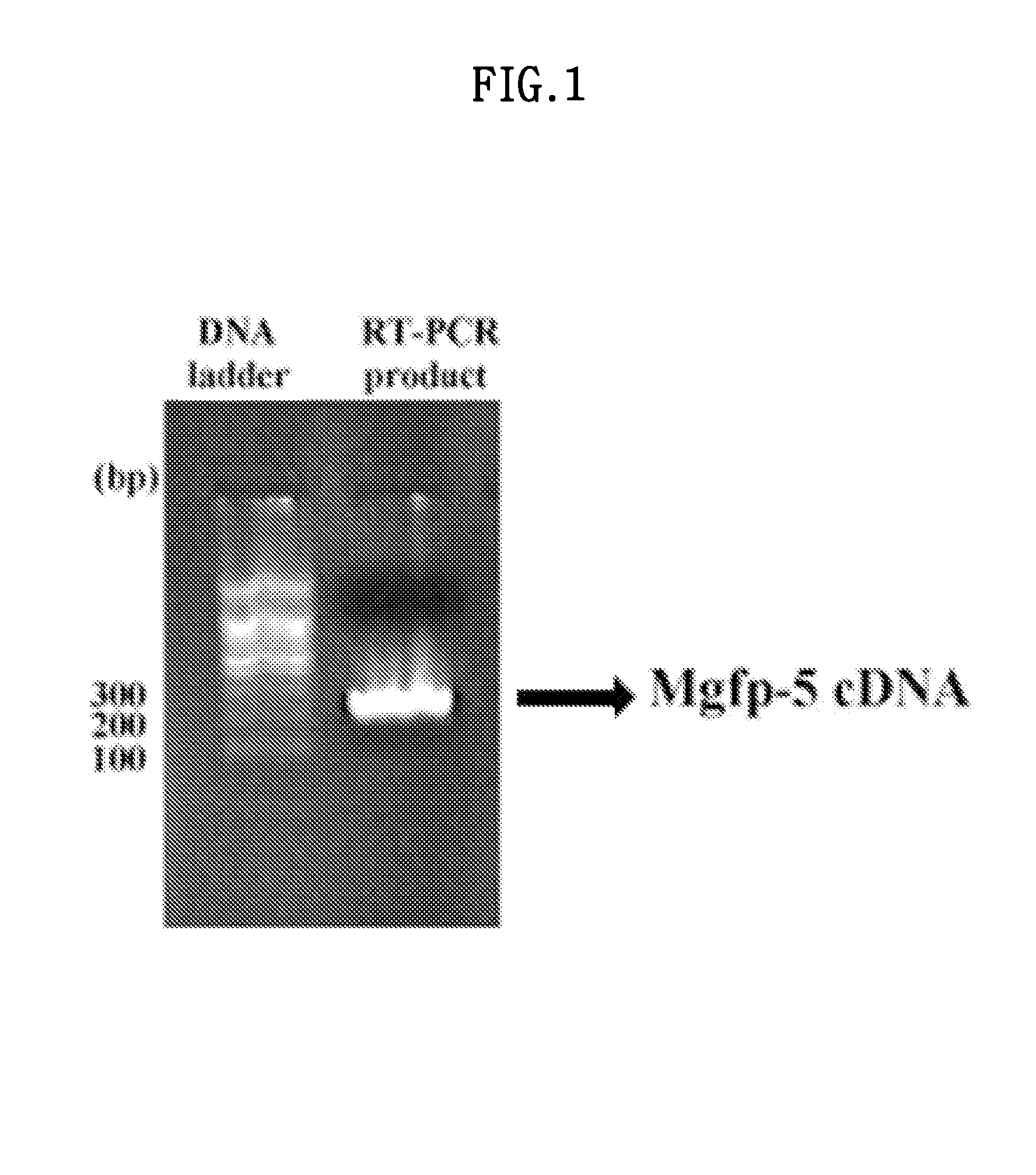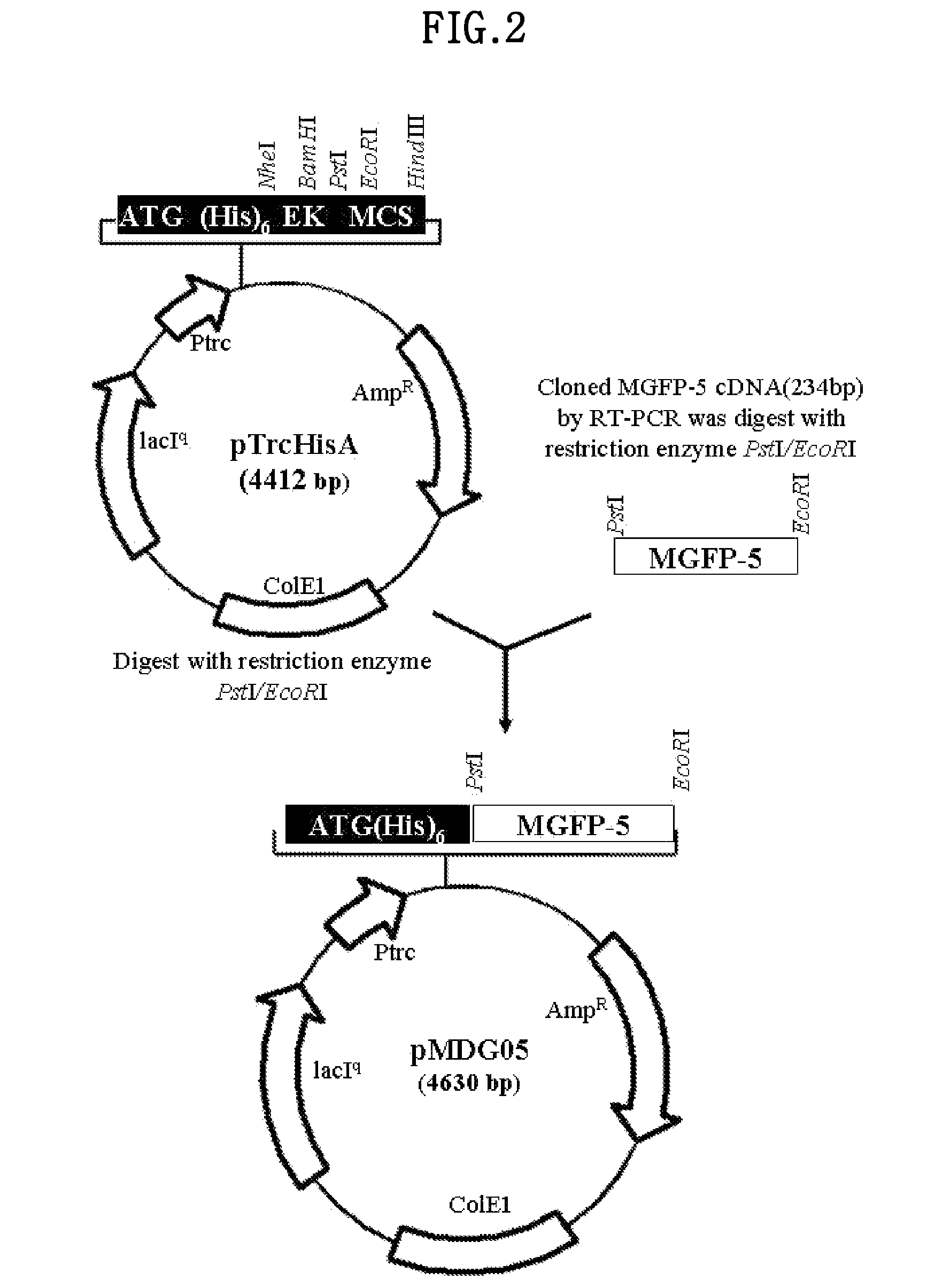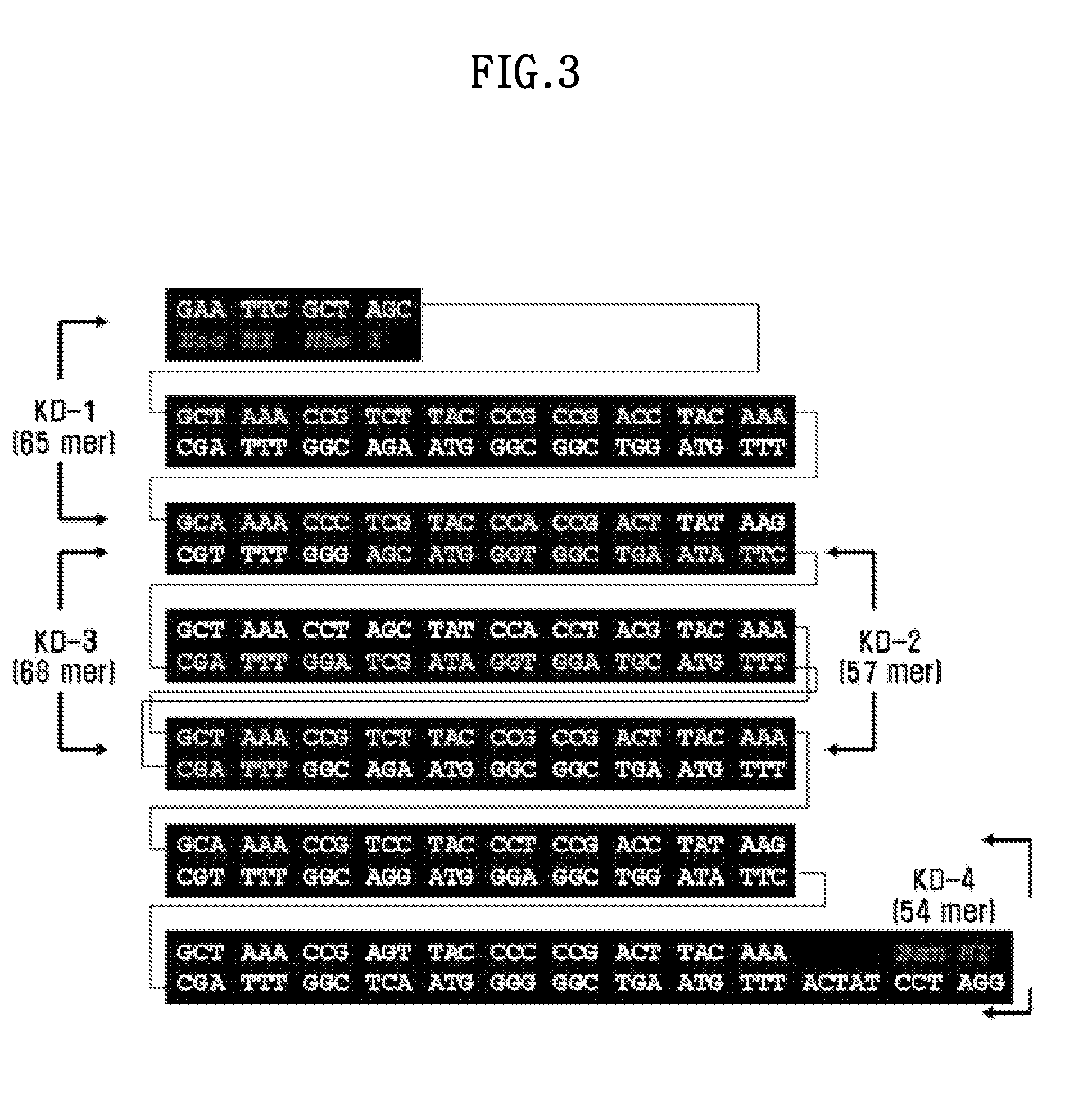Mussel bioadhesive
a bioadhesive and mussel technology, applied in the field of mussel bioadhesives, can solve the problems of low protein yield, labor-intensive and inefficient natural extraction process, and failure to express functional and economical mussel adhesive proteins
- Summary
- Abstract
- Description
- Claims
- Application Information
AI Technical Summary
Benefits of technology
Problems solved by technology
Method used
Image
Examples
example 1
[0084]In order to clone MGFP-5, the primer shown in SEQ ID NO: 1 (5′-ggcctgcagcagttctgaagaatacaaggg-3) and the primer shown in SEQ ID NO: 2 (gtagatctatacgccggaccagtgaacag) were each synthesized. PCR was run 30 times using the mussel cDNA library, and a PCR product of 243 bp was obtained (FIG. 1). The above PCR product was cloned in a pGEM-T vector (Promega).
[0085]To obtain the upstream signal sequence of MGFP-5, nested PCR was executed using mussel (M. galloprovincialis) cDNA library. The primers used were a T3 promoter primer of the ZAP vector (SEQ ID NO: 32) and the primer shown in SEQ ID NO: 3 (5′-cttgtattttccgctgttttt-3′). An amplification product of around 300 bp was obtained through the PCR and it was cloned into a pGEM-T vector.
[0086]To obtain the C-terminal poly-A tail region of MGFP-5, nested PCR was performed using SEQ ID NO: 4 (5′-aaaaacagcggaaaatacaag-3′) and T7 promoter primer (SEQ ID NO: 33). The amplification product of 350 bp was obtained an...
example 2
Construction of the Vector for Genetically Engineered Production of MGFP-5
[0088]The MGFP-5 cDNA in the pGEM-T vector was isolated by using the restriction enzyme sites PstI and EcoRI, then inserted into a pTrcHis A vector (Invitrogen, USA) that was cleaved with PstI and EcoRI restriction enzymes to construct pMDG05 (4630 bp). The pMDG05 vector was deposited at the Korean Collection for Type Cultures (KCTC) at the Biological Resource Center of Korea located at Eoeun-dong, Yuseong-gu, Daejon, Republic of Korea as of Jun. 20, 2002, and received a accession number of KCTC 10291 BP.
[0089]The pMDG05 vector contains a trc promoter for expression in E. coli, and allows induction of expression using IPTG (Sigma, USA). It also has 6 histidine residues at the 5′ end of the MGFP-5 gene for protein isolation and purification by affinity chromatography.
example 3
Construction of the Peptide (6×AKPSYPPTYK) Derived from FP-1
[0090]From the amino acid sequence of FP-1 (Genbank No. Q27409 or S23760), an FP-1 derivative as shown in SEQ ID NO: 25 where the peptide “AKPSYPPTYK” is tandemly repeated 6 times (referred to as “6×AKPSYPPTYK”) was constructed.
[0091]That is, KD-1 to KD-4 described in FIG. 3 was each synthesized, and then annealed, to synthesize 6×AKPSYPPTYK in SEQ ID NO: 8 encoding the FP-1 variant in SEQ ID NO: 7. Additionally, at the 5′ end of the 6×AKPSYPPTYK, EdoRI and NheI restriction enzyme sites in the direction of 5′ to 3′ were placed, and a BamHI restriction enzyme site was placed at the 3′ end (FIG. 3). The 6×AKPSYPPTYK was inserted into a pUC18 vector using the NheI and BamHI restriction enzyme sites to construct the pAD501 vector (M. Kitamura, 1999, Journal of Polymer Science Part A: Polymer Chemistry 37, 729-736).
[0092]In FIG. 3, the “ACTAT” located at the 5′ side of the BamHI site in the polynucleotide was inserted to preserv...
PUM
| Property | Measurement | Unit |
|---|---|---|
| optical density | aaaaa | aaaaa |
| pH | aaaaa | aaaaa |
| concentration | aaaaa | aaaaa |
Abstract
Description
Claims
Application Information
 Login to View More
Login to View More - R&D
- Intellectual Property
- Life Sciences
- Materials
- Tech Scout
- Unparalleled Data Quality
- Higher Quality Content
- 60% Fewer Hallucinations
Browse by: Latest US Patents, China's latest patents, Technical Efficacy Thesaurus, Application Domain, Technology Topic, Popular Technical Reports.
© 2025 PatSnap. All rights reserved.Legal|Privacy policy|Modern Slavery Act Transparency Statement|Sitemap|About US| Contact US: help@patsnap.com



